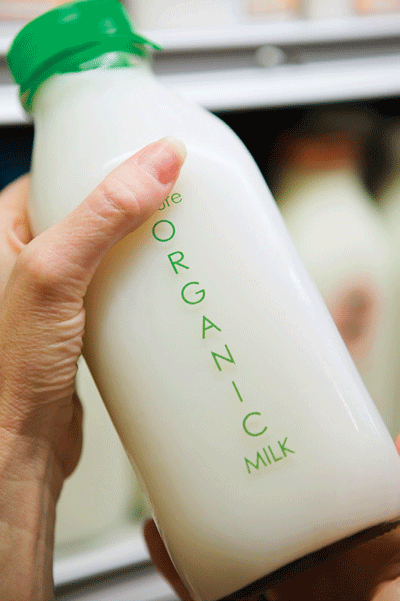Detox diets are all the rage, and for good reason: We Americans have dozens of toxic chemicals lurking in  our bodies, many of which arrive through food (get a 2012 report on human chemical exposure at cic.gov). Although cleanses are useful, preventing toxin intake up front is even better. Slash toxin exposure with these five proven strategies, listed in order of likely impact.
our bodies, many of which arrive through food (get a 2012 report on human chemical exposure at cic.gov). Although cleanses are useful, preventing toxin intake up front is even better. Slash toxin exposure with these five proven strategies, listed in order of likely impact.
If implementing all five feels overwhelming, start with one. Focus on progress, not perfection.
Commit to organic meats and dairy. Many shoppers opt for organic produce to avoid pesticides. But animal fatty tissue can be just as much of a danger. That’s because many toxic offenders are fat soluble, so animals and humans store them in fat cells rather than releasing them in urine. Eating organic meats and dairy minimizes exposure to pesticides, chemical fertilizers, steroids and other toxins rampant in conventional products. It’s worth the extra cost and basic market forces dictate that as more people buy organic animal products, the prices will drop, as we’ve seen with produce.
Think like a European. You know to choose whole over processed foods whenever possible, but when reality dictates otherwise, which ingredients should you shun? Start with those that are already banned abroad. The short list includes hyperactivity-inducing artificial colors such as Red 40, Yellow 5, and Blue 2; aspartame (think gum, diet drinks), which recent studies link to cancer and diabetes; and GMOs — found in nearly all nonorganic corn, soy, canola, and non-cane sugar—which have not been tested for long-term effects on humans but are designed to withstand high pesticide exposure. Look for the Non-GMO Project Verified seal on foods containing these ingredients.
Ditch the package. Nearly all Americans have hormone-disrupting phthalates and bisphenol-A (BPA) — found in plastics and cans — in their bodies, according to the Centers for Disease Control and Prevention. But a 2011 Silent Spring Institute study proved that you can cut levels in half or more in just three days by switching from packaged to fresh, whole foods and not eating out. Especially avoid the packaging perfect storm: warm fatty foods (such as grilled deli sandwiches, hot creamy soup or rotisserie chickens) encased in plastic. Liquid and acidic products also absorb more toxins from plastics. For staples such as rice, nuts, beans, cereals, and spices, hit the bulk bins. Bonus points if you take your own containers or remove items from the plastic bags when you get home.
Go glass. Plastic storage bins, wraps, and dishes also leach chemicals into your food, especially when the food is warm or heated in the plastic. Running the container through the dishwasher can accelerate toxin leakage by 55 percent in subsequent uses, according to a much-heralded 2008 study in Toxicology Letters. Trade plastic storage containers for glass, ceramic, porcelain, or stainless steel.
Eat less. Take a lesson from wood rats: These Southwest U.S. desert dwellers live on toxic plants — and thrive. A 2011 study in Functional Ecology revealed how: When toxins begin to build, wood rats eat less, sample a wider variety of foods, and increase time between meals — all of which lower their overall toxin intake and prevent buildup of any one contaminant. They also drink more water, which flushes out toxins and raises satiety when caloric intake is lower. Smart rodents.
Photo: Eating organic meats and dairy minimizes exposure to pesticides, chemical fertilizers, steroids, and other toxins rampant in conventional products.

 How to resolve AdBlock issue?
How to resolve AdBlock issue? 








